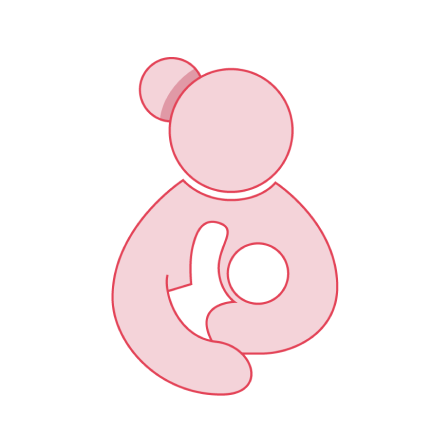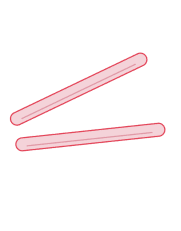LAM is for wāhine/women+ that are fully breastfeeding: feeding baby on demand without food supplements. It can only be relied upon in the first six months after delivery and only if there is no return of menstruation in that time.

Lactational amenorrhoea (LAM) is the term used to describe the pause in menstruating while fully breastfeeding, and is essentially nature’s way of preventing pregnancy soon after birth to give your body a chance to heal.
It is highly recommended that you speak with your midwife, a nurse, or doctor about LAM.
When a mother is exclusively breastfeeding her baby, the body produces high levels of an ovulation-suppressing hormone called prolactin. Studies have found that it seems to be specifically when the nipple is stimulated from the baby suckling that levels of prolactin in the blood increase. If the baby is exclusively breastfed, and at regular intervals (at least every 6 hours during the night and every 4 hours during the day), prolactin levels in the blood remain elevated for the first months following birth.
As long as prolactin levels are high, it is highly unlikely you will ovulate and therefore for your periods to come back, at least in the first six months following birth.
Prolactin levels can quickly decrease however if supplementary formula is introduced, and when baby starts on solid foods, as this reduces the frequency of breastfeeds. Prolactin levels also naturally decrease over time, which is why this method is only considered reliable for the first six months following birth. It only takes about seven days from when breastfeeding ceases for prolactin levels to go back to what they were pre-pregnancy.
If you do get your period (at least two consecutive days of bleeding any time from about 6 – 8 weeks after giving birth) even if you are fully breastfeeding, you are at risk of getting pregnant.
Interestingly, studies have shown that expressing milk may not be as effective at stimulating the production of prolactin, and similarly if the nipples have been numbed with for example an anaesthetic. There are also other factors that can affect prolactin levels such as smoking and depression.
While it is difficult to know exactly when your menstrual cycle will resume, you can be certain that the less you breastfeed the more likely that your cycle will kick back into action. If you choose not to breastfeed at all, you can expect your menstrual cycle to resume within the first few months after birth.
As you can never be quite sure when ovulation will begin after birth, you may want to use other methods of contraception after birth to be on the safe side.
Speak with your midwife, nurse, or doctor to find out more about LAM.

Note: Wāhine/women+ includes consideration of whānau and social context and is intended to be inclusive of gender diverse people who share some of the health needs of women but do not identify as women. (RANZCOG, 2022)
The development of this website was supported with an educational grant from Bayer.
Copyright © Protected&Proud. All Rights Reserved.
A non-hormonal (Copper) IUD is a small, T-shaped plastic device which contains copper. It is put into the uterus (womb). A Copper IUD does not contain hormones. The copper IUD can also be used as an Emergency Contraception.
LASTS FROM 5 TO 10 YEARS | PLACED IN THE UTERUS | EFFECTIVE IMMEDIATELY | EMERGENCY CONTRACEPTION – UP TO 5 DAYS AFTER SEX
A Hormonal IUD is a small, T-shaped plastic device, which contains the hormone progestogen to control your fertility. The device is put into the uterus (womb).
HORMONES | LASTS FROM 3 TO 5 YEARS | PLACED IN THE UTERUS | EFFECTIVE IN 7 DAYS

Two small, flexible plastic rods that are placed just under the skin in the upper arm. The implant releases the hormone progestogen to control fertility.
HORMONES | LASTS UP TO 5 YEARS | PLACED IN THE ARM | EFFECTIVE IN 7 DAYS